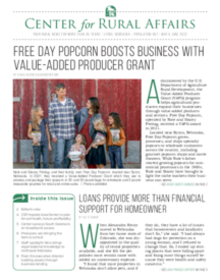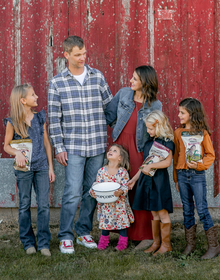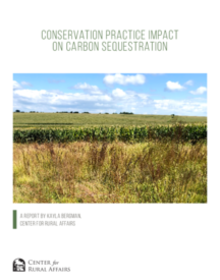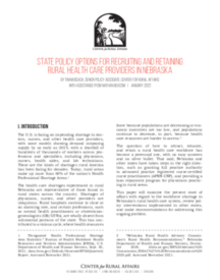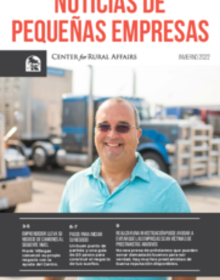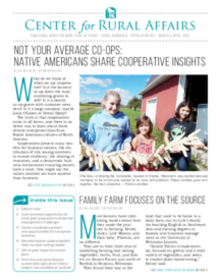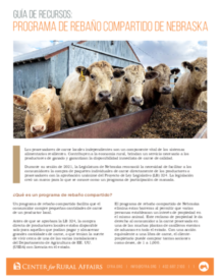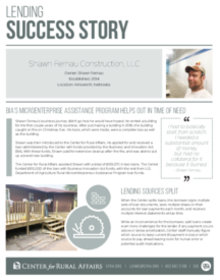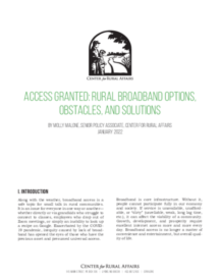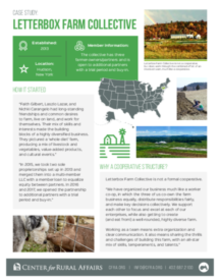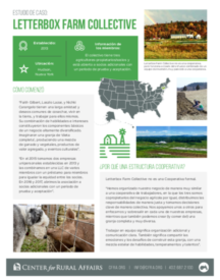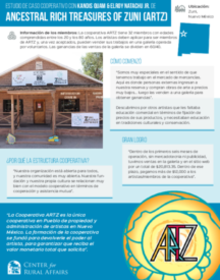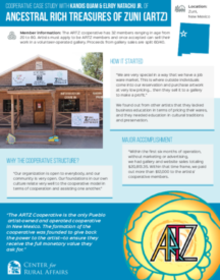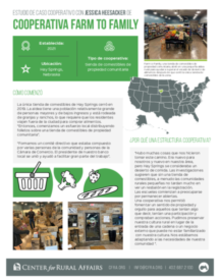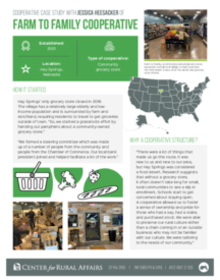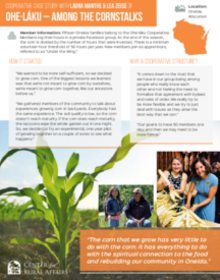We aren't afraid of the weeds. The people living in rural America deserve a serious and in-depth look at the issues and forces impacting their communities.
Every once in a while, I get to take a field trip. Or, what some of my coworkers call “Road Trip with Rhea.” One recent adventure took me to Piñon Market owned by Veronica Piñon, in Kearney, Nebraska. This grocery store is right on Highway 30, easy to find. I walked in the door and heard “Buenos Dias” from the back. I wandered back there and was greeted by Veronica. Immediately, I felt like I was a part of her community, a part of her family.
- Lending
- Small Towns
Noticias sobre Pequeñas Empresas del Center for Rural Affairs, incluyen historias seleccionadas de éxito de empresarios de Nebraska asistidos por nuestros programas e información que puede necesitar para iniciar o expandir su negocio.
- Lending
The Center for Rural Affairs' Small Business News includes select success stories on Nebraska entrepreneurs assisted by our programs and information that you may need to start or grow your business.
- Lending
Each year, the Center for Rural Affairs advocates for the continuation of U.S. Department of Agriculture (USDA) programs that benefit agriculture producers and small businesses. Click through this interactive map to see how these programs have influenced farms, ranches, and rural main streets...
- Farm and Food
- Lending
- Small Towns
Due to recent glaciation, the midwestern U.S. has some of the most productive soils in the world. These rich soils contain a layer of organic matter, called the O horizon, atop a layer of topsoil, called the A horizon. Both of these soil layers contain nutrients necessary for plant growth...
- Farm and Food
- Policy
The U.S. is facing an impending shortage in doctors, nurses, and other health care providers, with some models showing demand outpacing supply by as early as 2025, with a shortfall of hundreds of thousands of workers across professions and specialties, including physicians, nurses, health aides, and lab technicians.
- Small Towns
- Policy
Noticias sobre Pequeñas Empresas del Center for Rural Affairs, incluyen historias seleccionadas de éxito de empresarios de Nebraska asistidos por nuestros programas e información que puede necesitar para iniciar o expandir su negocio.
- Lending
We love to get out to meet you face-to-face, but due to the pandemic, some meetings haven’t been possible. So, we are reaching out in different ways such as videos on our YouTube Channel (page 1); a podcast (page 8); a Zoom gathering (page 2); and even online workshops (page 5).
- Farm and Food
- Lending
- Small Towns
Los procesadores de carne locales independientes son un componente vital de los sistemas alimentarios resilientes. Contribuyen a la economía rural, brindan un servicio necesario a los productores de ganado y garantizan la disponibilidad inmediata de carne de calidad.
- Farm and Food
The Center for Rural Affairs' Small Business News includes select success stories on Nebraska entrepreneurs assisted by our programs and information that you may need to start or grow your business.
- Lending
Shawn Fernau’s business journey didn’t go how he would have hoped. He rented a building for the first couple years of his business. After purchasing a building in 2016, the building caught on fire on Christmas Eve. His tools, which were inside, were a complete loss as well as the building.
- Lending
- Small Towns
Ana Gonzalez and Veronica Ramos, sisters, are 50/50 members of A&V Enterprises, LLC. In addition, Ana owns Enchanted Bakery and Veronica owns Blossom Beauty, a hair and nail salon.
- Lending
- Small Towns
Along with the weather, broadband access is a safe topic for small talk in rural communities. It is an issue for everyone in one way or another—whether directly or via grandkids who struggle to connect to classes, employees who drop out of Zoom meetings, or simply an inability to look up a recipe on Google. Exacerbated by the COVID-19 pandemic, inequity caused by lack of broadband has opened the eyes of those who have the precious asset and presumed universal access.
- Lending
- Small Towns
Letterbox Farm Collective is located was established in 2013 and is located in Hudson, New York. The collective has three farmer-owners/partners and is open to additional partners with a trial period and buy-in.
- Farm and Food
El colectivo tiene tres agricultores-propietarios/socios y está abierto a socios adicionales con un período de prueba y aceptación.
- Farm and Food
La cooperativa ARTZ tiene 32 miembros con edades comprendidas entre los 20 y los 80 años. Los artistas deben aplicar para ser miembros de ARTZ y, una vez aceptados, pueden vender sus trabajos en una galería operada por voluntarios. Las ganancias de las ventas de la galería se dividen en 60/40.
- Small Towns
The ARTZ cooperative, located in Zuni, New Mexico, has 32 members ranging in age from 20 to 80. Artists must apply to be ARTZ members and once accepted can sell their work in a volunteer-operated gallery. Proceeds from gallery sales are split 60/40.
- Small Towns
La única tienda de comestibles de Hay Springs cerró en 2019. La aldea tiene una población relativamente grande de personas mayores y de bajos ingresos y está rodeada de granjas y ranchos, lo que requiere que los residentes viajen fuera de la ciudad para comprar alimentos.
- Farm and Food
- Small Towns
Established in 2021, Farm to Family Cooperative is a community grocery store located in Hay Springs, Nebraska.
- Farm and Food
- Small Towns
Members of the Ohe∙láku Cooperative, located in Oneida, Wisconsin, work together to grow their own corn. This case study explores how they started, what it all entails, and more.
- Small Towns
- Farm and Food


